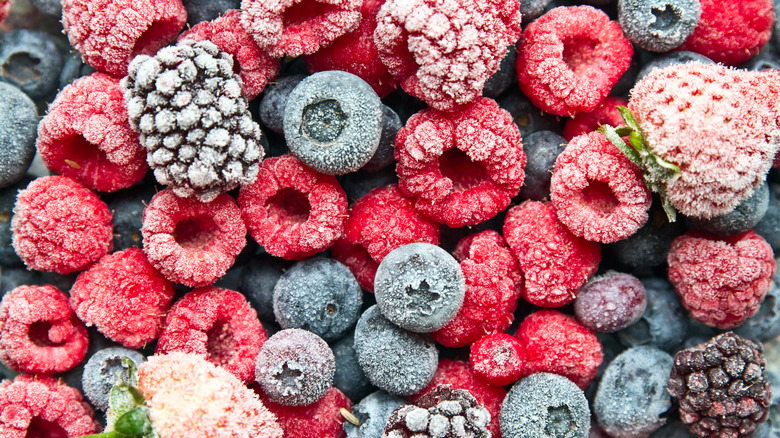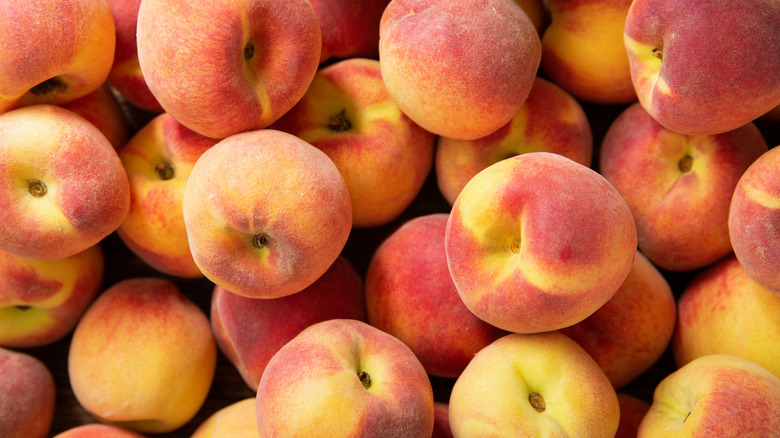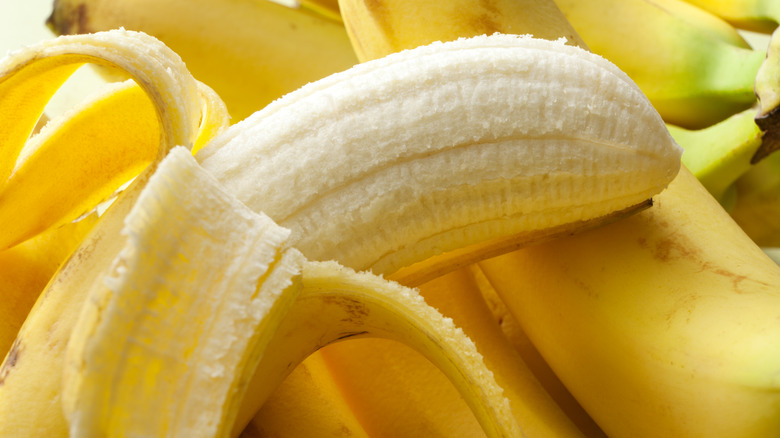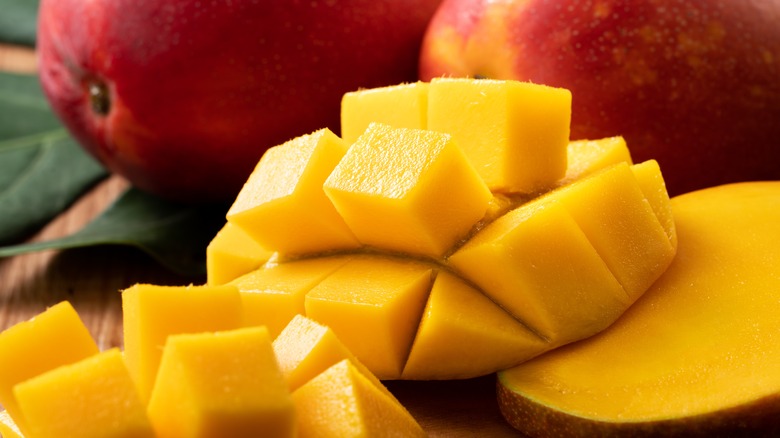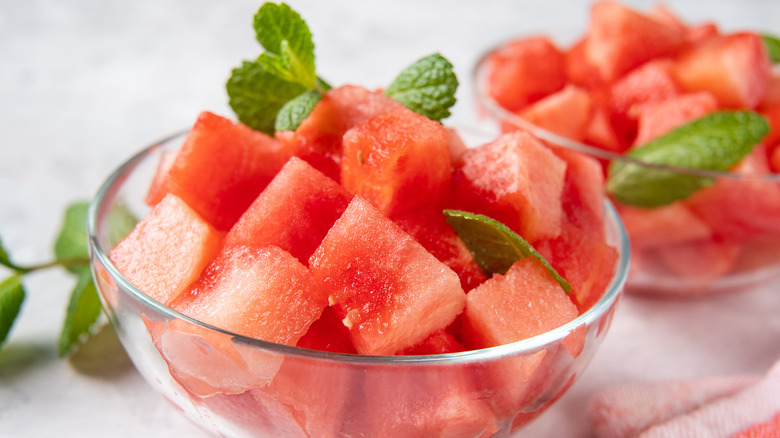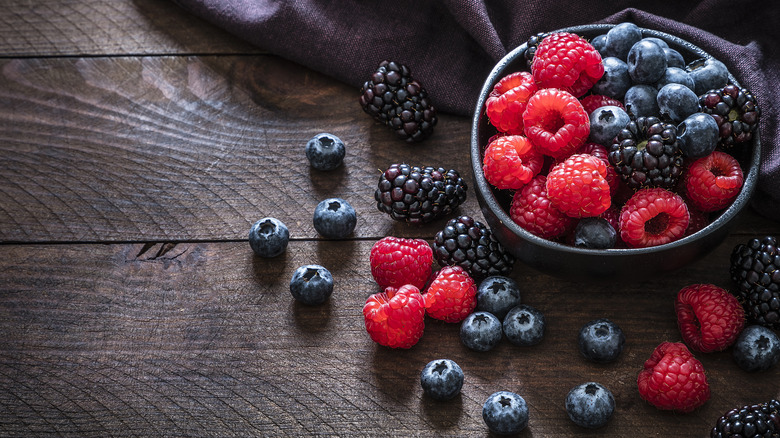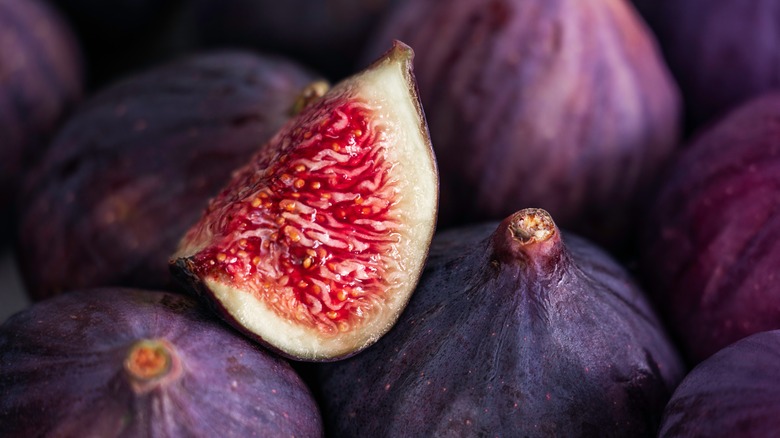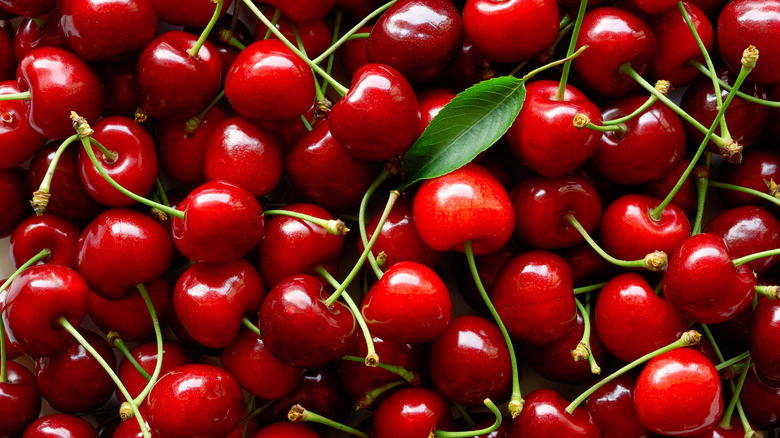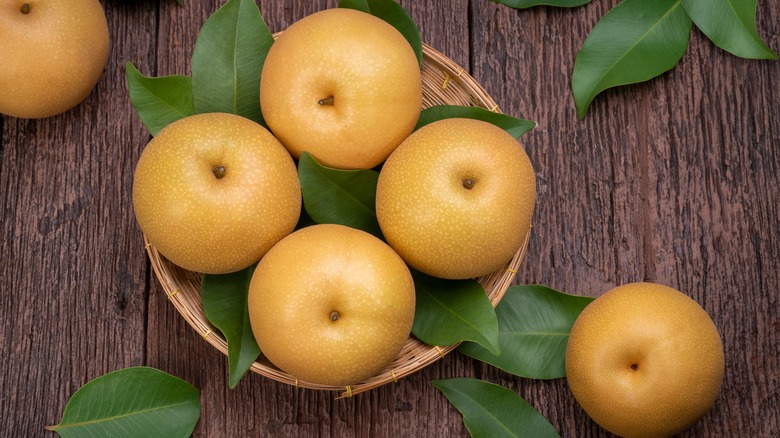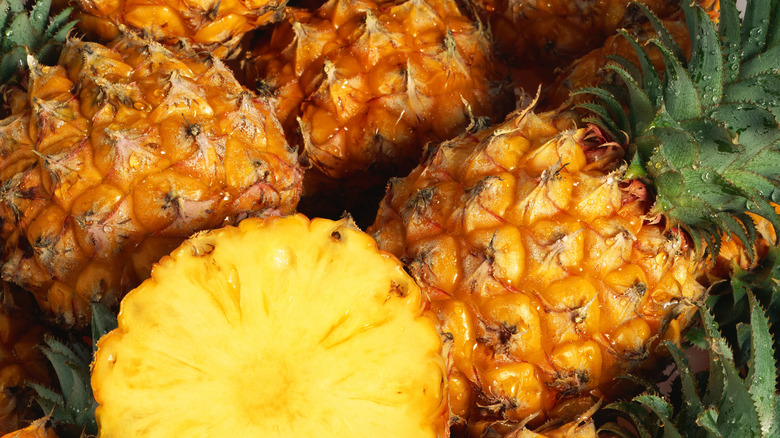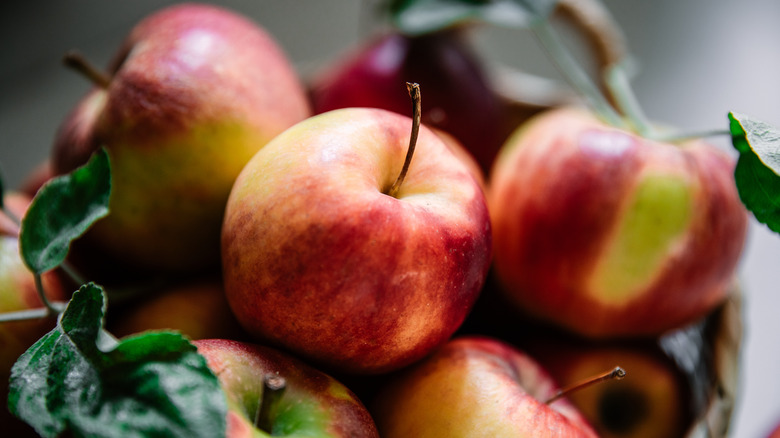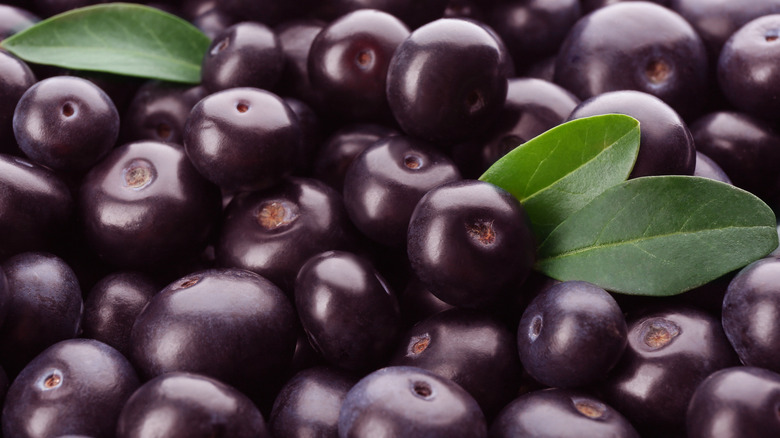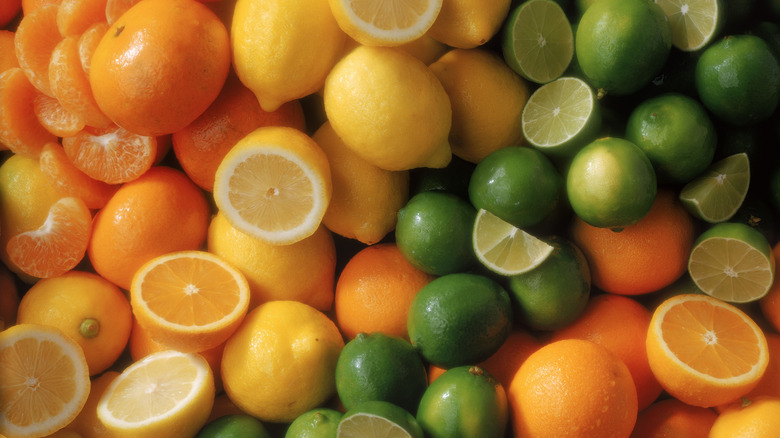6 Frozen Fruits To Stock Up On, And 6 You Can Skip
When you head to the market for fruit, you likely don't steer your cart directly to the frozen food section — but maybe you should. From tubs of frozen berries to bags of frozen exotic pineapple and mango, the freezer section can be a busy home chef's best friend. Frozen produce is meant to be hardy and quick to use, with a longer lifespan that cuts down on unwanted food waste and spoilage. It's a great way to buy certain fruits, and can be especially useful if you're shopping for delicate or fragile items that perish quickly.
But it's also true that not all frozen fruit is created equal. Despite the convenience and availability, there are definitely types of fruit that should only be bought fresh. Wondering which is which — the frozen fruits you should stock up on and ones you should buy ripe? Read on for our ultimate recap of the six frozen essentials you should always have on hand and six frozen fruits you should skip the next time you're at the grocery store.
Stock: Frozen peaches
Peaches may be the perfect frozen fruit — with their lush pink and golden-hued skin, that wonderful fuzzy texture, and juicy sweet flesh and tart acidic bite. But sadly, the window when you can buy peaches that are locally grown and at the peak of ripeness is super short — a month or two max in most parts of the United States. That's why frozen peaches are such a great alternative and something everybody should always keep on hand.
Peaches tend to be harvested at their ultimate ripeness and frozen almost immediately after they're processed. That not only helps to preserve their incredible flavor but also locks in tons of nutrients. In fact, frozen peaches might be a better source of vitamin C than the fresh version of the fruit!
Frozen peaches also have a more consistent, ripe flavor than their fresh counterparts. That's because the fresh version of the fruit is often picked before its fully ripe in order to make it safely to grocery store shelves before spoiling. And perhaps best of all — frozen peaches come washed and pre-pitted so there's significantly less prep work however you want to use them, whether you're making a peach cobbler, peach pie, or throwing together a quick peach smoothie as part of your morning breakfast routine.
Plus, while canned peaches are also readily available, frozen peaches don't come with all that added sugar — another big win.
Skip: Frozen banana
The freezer sections in most big-box retailers and grocery stores alike contain one unique oddity that no one should ever need to buy: frozen banana! The question here is why? Why does it even exist? Fresh bananas are readily available year round. They taste great. They're affordable. And they're easy for everyone to find, even in small towns and rural areas across the country.
If you've ever bought frozen bananas before, you'll know they're mushy and have a slightly odd taste and smell that you don't get with the fresh fruit. Frozen banana tends to brown quickly when exposed to the air, and is prone to ice crystals that can also make the fruit seem watery when it thaws out.
Even if you're baking or using the banana in another recipe, there's no real benefit to frozen banana over fresh. It's not more convenient. It certainly doesn't taste better. And it's definitely not something you need to keep on hand or stock up on. Better to stick to fresh bananas!
Stock: Frozen mango
Like peaches, mangoes are another wonderful, juicy fruit that just scream summer. They're almost a kind of candy that grows on a tree! But like peaches, fresh mangoes can sometimes be hard to find for many of us living in the United States. The fruit just isn't grown here much — most mangoes we find in stores are imported from Mexico. Because of that long trip getting here, that also means the mangoes are picked before they are fully ripe and then shipped in refrigeration until they hit store shelves.
We can let mangoes ripen on the counter, but they sometimes never get soft — other times, the flavor can be off. That's why frozen mangoes are such a good alternative. They have year-round availability, a much longer shelf-life, consistent flavor, and can also be much more budget-friendly. (Some fresh mangoes can cost more than $2 or $3 apiece.)
Frozen mangoes are versatile, and can also be used in a number of recipes. More than just fodder for smoothies or blended in a frozen cocktail, you can use frozen mango to make everything from creamy, protein-packed mango shrimp stir-fries to a savory mango dipping sauce for your favorite seafood. And if you're in the mood for a dessert that's sure to impress, frozen mango is also great in puddings or paired with ice cream. Or, serve it up in a frosty exotic mangonada, a popular tangy chili powder-packed drink sold on the streets of Mexico.
Skip: Frozen melon
Frozen melon is another oddity hard to justify buying. Of course, we're not talking about frozen melon dessert bars or melon sorbets. Those kinds of treats have their place and can be quite tasty. No, we're talking plain, unsweetened, frozen melon balls. They exist! You can buy them. But why would you?
Whether it's watermelon, cantaloupe, or honeydew, you're never going to find a high quality, delicious frozen version of the fruit. The problem is its water density — it's just too high. Watermelon, for example, is more than 90 percent water! As you likely know, water expands when it freezes. So if you freeze something with that much water, it's going to fall apart when it thaws. And all that delicious flavor will escape too, leaving you a watery mass of flavorless mush.
Plus, what would you even do with frozen melon besides adding it to a blender drink of some type? You likely won't be trying to bake with it or use it in any other type of prepared dessert. Better to stick with fresh melon. Or, instead of frozen, stock up on dried melon. Drying out the flesh of a melon concentrates its flavor, creating a unique snack and treat. And dried melon can be used in everything from trail mix to muffins and oatmeal — even for a burst of sweetness in a savory rice pilaf side.
Stock: Mixed berries
Strawberries, raspberries, blueberries, and blackberries may not be as hard to find or have as short a window of availability as peaches or mangoes. But there's another reason to always keep a bag or two of mixed berries on hand in your freezer, and that's convenience!
Fresh berries are relatively fragile and spoil quickly if you leave them in your fridge for just a day or two longer than anticipated before you get to use them. But you don't have that problem with frozen berries. They taste just as sweet and flavorful as their fresh counterparts. Plus you don't have to prep them — no washing or removing stems or tops. You can just pop open the bag, grab a handful and toss those berries into your morning cereal or on top of some Greek yogurt or into a bowl of French vanilla ice cream. They're ready to go and they always taste great.
Plus, frozen berries are a nutritional powerhouse, packed with vitamins, minerals, and antioxidants. And they don't have any added sugar so they're great for people on all sorts of diets.
The one potential drawback with frozen berries over fresh is that they can turn a bit mushy when they thaw. To avoid this, let your berries thaw slowly in a cold water bath or let thaw at room temperature until they are just soft enough to eat — still cold but no longer frozen. Then use them immediately.
Skip: Frozen figs
Fresh figs are incredible. They've inspired poetry and wonderful art with their unique, striking teardrop shape and complicated fleshy network of tiny edible seeds. They're a one-of-a-kind fruit to be enjoyed as a rare treat — with a sweet, delicate honey-like flavor.
And while many fruits are fairly comparable in their fresh and frozen states, figs are not part of that group. Frozen figs bear almost no resemblance to fresh figs in any way. They're mushy and have none of the pleasing firmness or juiciness of fresh figs. Their flavor is muted and not as vibrant or exciting. And since they've been exposed to air, frozen figs oxidize and also don't look as beautiful as fresh figs do when sliced open.
If you're making a fig smoothie or fig ice cream or maybe fig muffins, go ahead and use some frozen fig if that's all you have access to. But for salads or cheese or charcuterie boards — or even roast or grilled figs — you need the fresh version of the fruit.
Can't find fresh figs in your market? Consider a fig jelly instead of resorting to frozen figs. The flavor is better and it's a lot more versatile. Try it on a "Fig And Pig" Crostini, for instance. If you've never had one before, get ready — it's a game changer!
Stock: Frozen cherries
Cherries are another of our most beloved fruits. They epitomize perfection — putting a cherry on top — and they have a wonderful sweet yet tart quality that most of us just can't get enough of. If that weren't enough, they're also one of the best fruits we can eat, packed with nutrients that fight inflammation, promote heart health, improve sleep quality, and may even help to speed muscle recovery after a workout.
On the flip side, fresh cherries can also be expensive and hard to find when they aren't in season. And perhaps even more annoying — they're a bit of a pain to eat with both a pit and stem you need to deal with for each single fruit. But frozen cherries eliminate all those problems. They're available regardless of the season. They have a longer shelf life compared to fresh cherries. And there's no pitting or stemming required; they're ready right from the bag!
Frozen cherries are also ideal for use in pies. But don't limit yourself to just that single baked good. They're also great for cherry crisps or a cherry compote. You can throw a handful of frozen cherries into your next batch of muffins or mix some into pancake or waffle batter. And if you're feeling especially fancy, try your hand at making some classic cherry turnovers or Sour Cherry Cheesecake Bars, a decadent baked confection that's a cross between cookies and cherry cheesecake. It's sure to impress.
Skip: Frozen pears
Like figs, pears are beautiful, delicate, and pack a one-of-a-kind flavor you can't really get with any other fruit. But sadly, the absolute best things about pears — their crisp texture and mild, sweet flavor — are completely obliterated when the fruit is frozen. Thawed, frozen pear is weirdly soft, flavorless and really has limited culinary uses. It can be throw into a blender and turned into some sort of drink. But that's about it. It's not good for baking or in savory dishes and you certainly can't use frozen pears in salads or on cheese trays.
Fortunately, there's no real reason you should ever need to buy frozen pear. The fruit is readily available year round in markets. They ripen nicely at home so even if they're hard and green when you buy them, you can help them along with a few handy tricks.
If, for some reason, you can't find fresh pears or you just need something pear-flavored in a hurry, you have other options. Dried pears are quite delicious and can be used for everything from snacks to inclusion in baked goods, oatmeal, and salads. And pear butter is delightful whether used as a dipping sauce, glazed for roast meats, or even swirled into your favorite morning yogurt.
Stock: Frozen pineapple
Few things are more delicious than a slice of freshly grilled pineapple, charred and caramelized to smoky perfection. Or maybe you love a classic Piña Colada, cool and frothy and perfect for relaxing after a long day? Those are great reasons to have fresh pineapple on hand. But they're also the exception to the rule. Most of us don't need a whole fresh pineapple around all the time. Whether we're making teriyaki pork or a tropical smoothie or maybe preparing a holiday ham, chances are you only need a small amount of pineapple. That's why frozen pineapple is such a good alternative.
It's quick and easy to use no matter what recipe you might be preparing. The frozen pineapple is cleaned, diced, and ready to add to any recipe. Plus, there's no added sugar like in canned pineapple — you just get that sunny, tropical pineapple goodness!
Have some frozen pineapple on hand and not sure what else you can do with it? Throw together a quick entree of pineapple fried rice. Simply sauté cooked rice and diced chicken or shrimp with bell peppers, peas, and carrots. Then, when the meat is cooked through and the veggies are tender, stir in the thawed frozen pineapple for a burst of sweetness. Season with soy sauce, garlic, and ginger and serve.
Skip: Frozen apples
Walk into any decent-sized market or grocery store and you're likely to see at least a dozen varieties of fresh apples, regardless of the time of year. Even the smallest, most rural market likely carries a handful of fresh apples year-round — these can last anywhere from six to eight weeks when properly refrigerated.
On top of fresh apples, you can buy a wide mix of delicious dried apple both diced and in slices. There's also apple butter, canned apple pie filling, apple sauce, and apple juice. So, while frozen apples are available, the question is why would you buy them? They're mushy when thawed, they oxidize and turn brown easily so they aren't pretty, and there's no convenience or cost-saving in purchasing apples frozen instead of fresh or in any number of other forms.
This one is another no-brainer — avoid stocking up on frozen apples. Save room in your refrigerator for fresh apples and pretend the frozen ones don't even exist. You won't miss them!
Stock: Frozen açaí
Good luck finding fresh açaí anywhere in the United States. These unique earthy, uber-tart berries with an almost chocolate-like undertone are native to the Amazon rainforests in Brazil. They're a staple food for the indigenous populations there, but the fruit is also highly perishable and has a very short shelf life once harvested, so it almost never makes its way to the United States fresh in large quantities.
Luckily, frozen açaí berries and pureed fruit are readily available. If you want to enjoy this incredible, highly flavorful and nutritious fruit, you have to get it in its frozen state.
Like most types of berries, açaí is commonly enjoyed for breakfast. You can down it as a smoothie or in any number of incredible breakfast bowls — we like ours with extra everything! But frozen açaí puree is also ideal for homemade popsicles, sorbet, margaritas, and even mixed into your morning oatmeal.
Or, for a special treat, marinate beef or pork in a frozen açaí marinade. Simply mix thawed açaí puree with ingredients like cayenne powder, smoked paprika, orange juice, and minced garlic. To finish the marinade, stir in a bit of olive oil and salt and pepper to taste. Then, let your protein sit in the açaí mixture for a few hours before you put it on the grill. It's easy and incredibly delicious!
Skip: Frozen citrus
In the 1950s and '60s, frozen citrus concentrate was a big deal. Mothers and grandmothers who had gone through years of war and rationing considered the frozen puree a great, affordable way to make "fresh" juice. It had a long shelf-life and it was much cheaper than buying fresh not-from-concentrate juice.
But a lot has changed since those good ol' days and the demand for frozen citrus concentrate has obviously declined. If people aren't buying orange, lemon, or lime juice pulp puree, there's even less reason to consider stocking up on frozen citrus segments.
Similar to the frozen melon ball disasters we covered earlier, citrus has an incredibly high water density. So when you freeze and thaw citrus segments, they not only lose all their valuable juices, they almost instantly turn to mush. You might consider throwing some frozen citrus segments into a fruit tart, pie, or cobbler for bit of zesty, added tartness. Or you can use a few of the frozen chunks in a grilled or roast meat marinade or glaze where the texture of the fruit doesn't really matter.
But aside from very limited and specific types of use, there's very little reason to not just buy fresh citrus fruit instead of frozen — it's available, affordable, and more versatile. And it tastes infinitely better — when it comes to citrus, fresh is best!

